"Shoe As World", Singapore Biennale and Contemporary Installation Art
"Shoe As World: Inability of Different Worlds to Coexist"
The thing about being home, sick, but with energy to spare is that you fiddle around in that heavy-headed twilight zone between (1) acetaminophen-codeine-prednisolone-loratadine drowsiness where both reading and playing musical instruments musically are impossible; and (2) raging high feverishness where there are nightmares about existential problems and irresolvable space-time relativities, and you thus create the monstrosity above.
And while we're at it, why not? In the spirit of Singapore Biennale 2006, an amateur curator's writeup of thatwhichwasaperfectlynormalshoemindingitsownbusiness is this:
Or I could have just filled a whole lot of shoes with butter and left them around the top of Bukit Timah hill:
Yu Xiuzhen, "Shoes With Butter" (1996)
but then, likedat, sure kenna corrective work order.
Or I could just have made like a conceptual artist and written a set of instructions describing the work. To be shortlisted for the Turner Prize, however, would require far less work:
Singapore Biennale (Tanglin Camp)
Thereal accredited stuff was at the Singapore Biennale. And the wanderup to Tanglin Camp went like this:
first, was P.S. Café at Harding Road for afterwork fortification and for the gorgeous cake display. There was catching up and foccacia and different types of humus and fork-waving discussions about sermons and meltinyourmouth beef tenderloin and nattering and mash and holding aloft mushrooms as big as your palm and then some respectful quiet for the deadly chocolate cake lying stickily in its sticky chocolate sauce.
Then, feeling our way through the pitch-blackness to Tanglin Camp, someone looked down at the pitch-black ground and tried not to see undeadpeople things. And I fought the urge to tap her ghostily on the shoulder just to hear her scream.
Safe under the lights of Tanglin Camp without a pontianak on a bad hair day in sight, we came first to Agathe de Bailliencourt's "Occupation Bleue"
In the Exhibition Short Guide, Roger McDonald says:
De Bailliencourt explains a bit more herself:
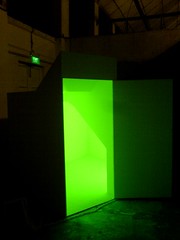 In the next room was Younès Rahmoun's "Ghorfa", supposedly a replica of the artist's meditation room under the stairwell in his Moroccan home.
In the next room was Younès Rahmoun's "Ghorfa", supposedly a replica of the artist's meditation room under the stairwell in his Moroccan home.
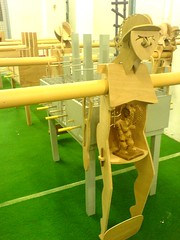 Then there was Charles Juhász-Alvarado's "Escala" (Stopover): a gigantic fooseball table installed in a room.
Then there was Charles Juhász-Alvarado's "Escala" (Stopover): a gigantic fooseball table installed in a room. 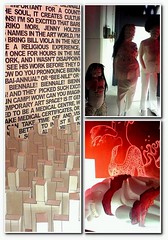 In another block was Brian Gothong Tan's "We Live In a Dangerous World"
In another block was Brian Gothong Tan's "We Live In a Dangerous World"
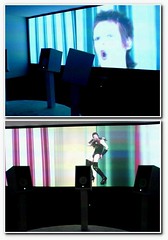 Drawn by some terribly repetitive Glam music, we opened a door to the glare of Philip Brophy's "Fluorescent" with the artist in full camp glory starring in a luridly-coloured installation.
Drawn by some terribly repetitive Glam music, we opened a door to the glare of Philip Brophy's "Fluorescent" with the artist in full camp glory starring in a luridly-coloured installation.
In the possibly-trusty Exhibition Short Guide, Russell Storer says:
Happily for one increasing grumpy visitor, the next installation, Takashi Kuribayashi's "Aquarium: I feel like I am in a fishbowl", was both "interactive" and "fun" (as promised by NAC CEO Lee Suan Hiang). More "total installation" some would say, where one is simultaneously a viewer and a "victim". Victimising or not, it was, naturally, co-opted into participating in many a phone-cam-photo-for-my-blog photo.
For once the curator note seemed far more confused than our little plebian audience. Fortunately, Kuribayashi explains in a separate interview:
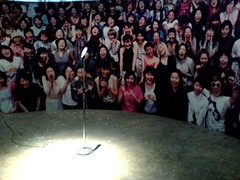
"Thank you, thank you all of you fans. Thank you for flying in from Japan and America. You love me, I know you love me. I am the best in Singapore, JB and some say, Batam! I love you too! Oooh! Yes, I love all of you! C'mon, let me hear you scream for me!"
Explains Fumio Nanjo:
Marita Muukkonen puts it more curatorishly:
Contemporary Installation Art
Contemporary installation art we are told, is meant to transport a person into a place that is strange and familiar at the same time. It is supposed to offer us new ways of looking at an old world. That's true if (1) the man-in-the-corner-kopi-tiam even recognises it as art in the first place (some people thought Yayoi Kusama's white-polka-dots-on-red wrapped trees along Orchard Road were advertisements for OCBC Bank); and (2) when they manage to recognise it as art (maybe it's hanging in a gallery or museum, or people pay loads of money for it, or there's a little white plaque beside it), if they can actually understand what the artist is trying to say.
As a medium, the installation art is vague and imprecise. It is difficult to grasp what exactly is meant, eg. by cups of urine lined up in a row or 7,000 trees planted in an empty field or disfigured dolls, without some explanation. But thus enlightened, it is possible to go back and look at the installation and feel an impact on the heart and mind greater than the mere words of the explanation. Or not.
It is possible that for this very reason, God ordained that the most precious message of all, the good news of the forgiveness of sins and the salvation from eternal death, the gospel of eternal life and a restored relationship with the Father, Son and Holy Spirit, should be transmitted not visually in paintings or sculptures, nor by installations or ornaments, but in language, in words, whether set to music or otherwise.
The thing about being home, sick, but with energy to spare is that you fiddle around in that heavy-headed twilight zone between (1) acetaminophen-codeine-prednisolone-loratadine drowsiness where both reading and playing musical instruments musically are impossible; and (2) raging high feverishness where there are nightmares about existential problems and irresolvable space-time relativities, and you thus create the monstrosity above.
And while we're at it, why not? In the spirit of Singapore Biennale 2006, an amateur curator's writeup of thatwhichwasaperfectlynormalshoemindingitsownbusiness is this:
A new world within the world of the human is created by the mere choice of the artist: the world of the shoe. A member of the audience, existing in the human world, is tempted to conform to the basis and assumptions of his world by imposing his own values on the shoe world by putting his foot in the shoe (so that he can go to school) and so "stamp out" this other, different, world. In this seemingly simple piece, the artist explores the complex questions of race, religion, politics, the war in the Middle East, the oppressiveness of the idea that wine and cheese go together and the tyranny of the innumerable decimal places of pi. However, this piece has no one meaning and the audience is invited to interpret it any way they want.Or something.
Or I could have just filled a whole lot of shoes with butter and left them around the top of Bukit Timah hill:
Yu Xiuzhen, "Shoes With Butter" (1996)
but then, likedat, sure kenna corrective work order.
Or I could just have made like a conceptual artist and written a set of instructions describing the work. To be shortlisted for the Turner Prize, however, would require far less work:
- unmade bed? Check.
- holiday video? Check.
- room with faulty on-off switch? Not yet but I can fix that.
Singapore Biennale (Tanglin Camp)
The
first, was P.S. Café at Harding Road for afterwork fortification and for the gorgeous cake display. There was catching up and foccacia and different types of humus and fork-waving discussions about sermons and meltinyourmouth beef tenderloin and nattering and mash and holding aloft mushrooms as big as your palm and then some respectful quiet for the deadly chocolate cake lying stickily in its sticky chocolate sauce.
Then, feeling our way through the pitch-blackness to Tanglin Camp, someone looked down at the pitch-black ground and tried not to see undead
Safe under the lights of Tanglin Camp without a pontianak on a bad hair day in sight, we came first to Agathe de Bailliencourt's "Occupation Bleue"
In the Exhibition Short Guide, Roger McDonald says:
Using existing smears and old marks on the walls and floors, she has intervened into this space, layering images and markings.Right.
De Bailliencourt explains a bit more herself:
Why we look the way we do?Said Scornful Pleb: isn't that generally known as vandalism? If her art really "intervened" into our clean public spaces, the men in blue would have "intervened" with her - a fat rotan on her French butt. Besides, don't you think Banksy, Arofish and even our local The Killer Gerbil and White Dog Bobby deserve far more recognition by actually doing something on public property?
The rationale behind the creative concept of the Singapore Biennale 2006 stems from the strong belief of marrying visual art with street culture. An intervention of art into public spaces, allowing art to be an integral part of everyday life. This non-conformist mode of execution will reflect the omnipresence of art in almost every imaginable place or object and will evoke positive participation and interest from the general public.
 In the next room was Younès Rahmoun's "Ghorfa", supposedly a replica of the artist's meditation room under the stairwell in his Moroccan home.
In the next room was Younès Rahmoun's "Ghorfa", supposedly a replica of the artist's meditation room under the stairwell in his Moroccan home.Beyond formal and spiritual questions, the artist proposes the experience of the work and invites the public into a "recreated" intimate space. In this identical reproduction of his workspace (ghorfa), we may also perceive the care for symmetry that is so present in the Arab arts and sciences. Younès Rahmoun claims this practice, donating his imaginary and exchanging his workspace for a time of encounter with the other.Scornful Pleb: Cheh. And I got all excited thinking it was aliens, I did. Right. Nothing to see here, move on, move on.
 Then there was Charles Juhász-Alvarado's "Escala" (Stopover): a gigantic fooseball table installed in a room.
Then there was Charles Juhász-Alvarado's "Escala" (Stopover): a gigantic fooseball table installed in a room. Under colonisation came Christianity. In vibrantly multi-racial Puerto Rico, Indians and Africans were obliged to practice Catholicism. Ancestral rites were considered pagan and banned; Indians couldn't practice their ritual ball game (similar to football) while Africans were taught to pray to the Spanish saints. These impositions generated survival strategies, which are explored in Juhász-Alvarado's work for the biennale. "Escala" is a site-specific installation consisting of a gigantic table football game. Spectators interact with all the elements. The pieces are abstractions of the Christian saints worshipped by the Africans because their features were similar to those of the Yoruba's. This is how they fooled the Spaniards and maintained their own beliefs.
Juhász-Alvarado often invites his peers to make interventions into his pieces. For "Escala" he has invited five artists to create mini-installations exhibited on top of the tables and on the walls. All the invited artists have suffered because of their beliefs.
The third element of the installation, consists of two vast heads facing each other. Spectators can get inside them, and have the oppotunity to assume or possess different identities while they journey through the array of possibilities that "getting into another's head" suggests.
Three plots, three schemes, three strategies, three scales, three beliefs. The space is transformed into a confrontational zone that is simultaneously flexible, transformative and adaptable. It alludes to the Indian ritual ball game; to the African shift of beliefs, to the "3 Bs"; to the richness of Caribbean's hubrid culture; to all the manoeuvres Puerto Ricans have in order to believe in ourselves and deal with the burden of colonization. Enjoy this complicated game!
 In another block was Brian Gothong Tan's "We Live In a Dangerous World"
In another block was Brian Gothong Tan's "We Live In a Dangerous World"When visitors enter the space, they will step up onto a small slop that leads to a platform which divides the room into two sides. This division of space is a metaphor for two visions which are in the Western context - the binary oppositions, and in the Eastern context - Yin and Yang philosophy. There will be sculptures dressed in white, a small Merlion (Singapore's invented national symbol), photographic images, LCD monitors, forests, the Virgin Mary and a Kuan Yin Buddha statue, a figure wearing a burkha and more.
Tan's intention is to mix things up semiotically, so that a sculpture or any one element in his installation doesn't necessarily have one meaning, but can be interpreted in multiple ways. The message of his artworks cannot be reduced to a single monolithic statement about a subject that he is exploring, but is rathr a multitude of poetic statements, rambling personal observations and refreshing insights. In this way, he effectively questions complex issues like religions, humanity, war, spirituality and the present situation of the life of people in Asia by drawing unexpected connections and without being simplistic or reductive.
He also uses humour and design to make his art accessible and more easily "consumable", which is a strategy he often deploys to communicate with and engage his audience. As he says,"In fact, sometimes all it takes is a shift of perspective to re-interpret old problems, to see things in new ways. This shift is something that I hope to achieve in my audience."
 Drawn by some terribly repetitive Glam music, we opened a door to the glare of Philip Brophy's "Fluorescent" with the artist in full camp glory starring in a luridly-coloured installation.
Drawn by some terribly repetitive Glam music, we opened a door to the glare of Philip Brophy's "Fluorescent" with the artist in full camp glory starring in a luridly-coloured installation.In the possibly-trusty Exhibition Short Guide, Russell Storer says:
Fluorescent is a music video, starring the artist himself as the embodiment of a Glam Rock hero: the sexually slippery icon that turned macho Hard Rock on its head in the early 1970s and never looked back. For Glam was about the future: a glittering, tin-foil future of space travel and fluid identity, where anyone could fly to the moon or be a star as long as they had the right outfits. Glam's celebration of surfaces prefigured the explosion of music video in the early 1980s, a form that experienced a brief flowering of intense, raw-edged creativity before sinking into a generic soup of expensive effects and glossy marketing campaigns. In the spirit of this early moment, Brophy's pop star is riotously rough, favouring pancake make-up over airbrushing and swagger over choreography.Ah Beng: Eh, so if I download pron, then I superimpose Osama's face, then photoshop him some mascara and lipstick, then cut MTV, means I artist liao lor.
Driven by throbbing surround-sound and split across three screens, Flourescent plays with the crucial yet awkward relationship between music and image. Featuring both the full mix and remixed versions of the song, the work severs this connection at several points when the sound drops out as the video performance continues, throwing a focus on the elaborate artificiality of Brophy's act and the constructed-ness of our aural and visual perceptions. A widely published writer and theorist on sound and cinema as well as a film-maker and sound artist, Brophy encourages one to "think with one's ears" when watching a film to appreciate the sensory and psychological properties of sound, transcending its generally conceived supporting role to the image.
Fluorescent also derives from Brophy's long-held fascination with genre-busting cultural forms - manga, horror films, Glam, pornogrpahy - as well as their insidious influence, seeping into and transfiguring so-called "High Art" and popular culture alike. Each form stretches or dissolves the body in one way or another, reducing it to a amorphous, polysexual entity that defies easy categorisation and forces a reconsideration of our own drives and mortality.
Happily for one increasing grumpy visitor, the next installation, Takashi Kuribayashi's "Aquarium: I feel like I am in a fishbowl", was both "interactive" and "fun" (as promised by NAC CEO Lee Suan Hiang). More "total installation" some would say, where one is simultaneously a viewer and a "victim". Victimising or not, it was, naturally, co-opted into participating in many a phone-cam-photo-for-my-blog photo.
For once the curator note seemed far more confused than our little plebian audience. Fortunately, Kuribayashi explains in a separate interview:
When you experience this art work, you'll feel like you're looking into an aquarium, but at the same time, someone is looking back at you. For example, when you go to the zoo, you think you are looking at animals, but actually the animals are watching the human beings. I'm dealing with that kind of changing perceptions and situations here.And She-Who-Was-About-To-Slink-Away thoroughly enjoyed Hiroyuki Matsukage's "STAR" (even though no one was quite sure what it was supposed to mean), glamming it up for her 5 minutes of fame.

"Thank you, thank you all of you fans. Thank you for flying in from Japan and America. You love me, I know you love me. I am the best in Singapore, JB and some say, Batam! I love you too! Oooh! Yes, I love all of you! C'mon, let me hear you scream for me!"
Explains Fumio Nanjo:
The piece reacts according to how audiences scream into a microphone. Directly in front of the mic, there is a photograph of 200 girls, who scream back at the screamer as if he or she is a star on a stage. This work symbolises the desire of many people to be a star, which reminds us of Andy Warhol's prediction:"In the future everyone will be famous for 15 minutes".The last stop was Otto Karvonen's "Belief Board", which was basically a hut supplied with pens of different coloured ink, pieces of paper headed "Offered" or "Wanted" and thumbtacks to hold up the paper.
Marita Muukkonen puts it more curatorishly:
For the Biennale, Karvonen will create a "temple" in a small building of 12 square metres at Tanglin Camp, where people can seach for and offer advice for problems with the help of various saints and gods. Visitors can try to figure out what to do about the downswing of their portfolio, their love lives or unemployment. When Karvonen travelled to Singapore recently he visited temples filled with colours and sounds where people went to pray regardless of their religion. Religions as well as ideologies move the masses, yet the world in all its complexity rests on the tiniest of entities. Karvonen invites us to make leaps of thought that might help us connect with these realities.Err...whatever. In any case, we offered salvation via Two Ways To Live.
Contemporary Installation Art
Contemporary installation art we are told, is meant to transport a person into a place that is strange and familiar at the same time. It is supposed to offer us new ways of looking at an old world. That's true if (1) the man-in-the-corner-kopi-tiam even recognises it as art in the first place (some people thought Yayoi Kusama's white-polka-dots-on-red wrapped trees along Orchard Road were advertisements for OCBC Bank); and (2) when they manage to recognise it as art (maybe it's hanging in a gallery or museum, or people pay loads of money for it, or there's a little white plaque beside it), if they can actually understand what the artist is trying to say.
As a medium, the installation art is vague and imprecise. It is difficult to grasp what exactly is meant, eg. by cups of urine lined up in a row or 7,000 trees planted in an empty field or disfigured dolls, without some explanation. But thus enlightened, it is possible to go back and look at the installation and feel an impact on the heart and mind greater than the mere words of the explanation. Or not.
It is possible that for this very reason, God ordained that the most precious message of all, the good news of the forgiveness of sins and the salvation from eternal death, the gospel of eternal life and a restored relationship with the Father, Son and Holy Spirit, should be transmitted not visually in paintings or sculptures, nor by installations or ornaments, but in language, in words, whether set to music or otherwise.
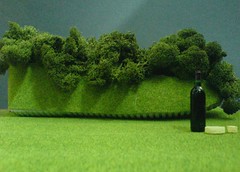
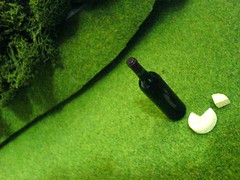
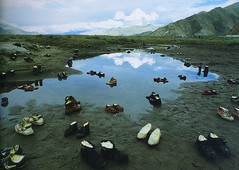
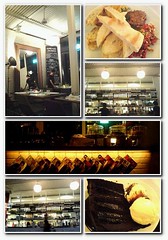
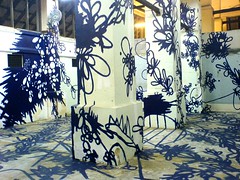
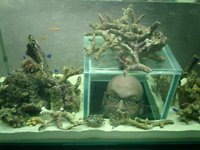
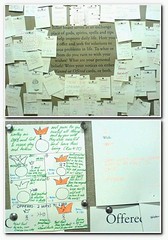







0 Comments:
Post a Comment
Subscribe to Post Comments [Atom]
<< Home